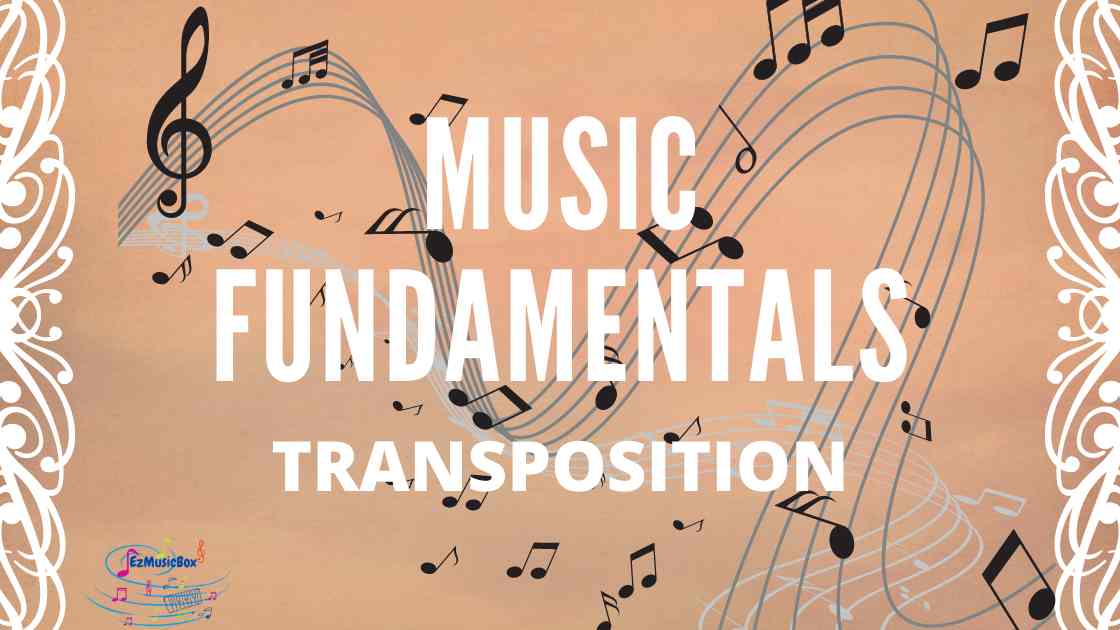Transposition in music is the act of changing the pitches of a piece of music from one key signature to another but not altering the relationships between these tones.
In a band or orchestral music, various instruments have different pitches and fingerings. Using transposition would make it easier to play a specific instrument. In vocal music, transposition is often applied to accommodate singers’ differing ranges.
Transposition in music is a handy tool to serve various purposes. Let’s take a closer look at it.
Table of Contents
An Example of Transposing
In the below example, we will transpose a period of music from the Key of F Major to the Key of G Major.
The interval of transposition in music is measured on the Grand Staff.
Since the Key of G Major is a Second (an interval) higher than the Key of F Major, we’ll write each note of the melody a second higher, in this case, two semitones higher. For the music transposition of the piano, we need to transpose tones for both hands.


Taking Care of Accidentals
In Piano Scales Explained, we introduced the accidentals (♯,♭, etc.). When transposing a piece of music, we must consider the accidentals. By default, the new key signature will take care of the implied raised or lowered pitches; however, special attention is required to transpose the explicit accidentals in front of any notes.
The following is an example of changing the explicit accidental.


Determining the Target Key
Determining the target Key Signature is a critical step. Depending on the purpose of the transposition, you’ll need to choose the interval. The following Chromatic Circle and keyboard may help you to check the interval and number of half steps when determining the target.


The notation for the black keys on the keyboard has two symbols, for example, F♯/G♭, C♯/D♭ , etc. We call them enharmonic tones because even though they are written differently, they sound the same and use the same key on the piano keyboard.
Transposing Instruments
A transposing instrument sounds a pitch higher or lower than the one it reads. The transposing instruments are very often labeled by the pitch of the scale they sound when they play the C major scale.

In the above example, a B♭ soprano instrument is the one that sounds a B♭ tone when reading a C. To have it sound like a C, the note needs to be written two half-steps up since B♭ is two half-steps lower from C.

Here is another example. A soprano instrument sounds an A tone when playing a C. To have it sound like a C, the note needs to be written three half-steps up since A is three half-steps lower from C.
More examples of transposing instruments:
| Group Name | Instruments | Sound | Must be Written |
|---|---|---|---|
| B♭ Soprano Instruments | Clarinets, Cornets, Trumpets, Saxophones | a major second below middle C | a major second above middle C |
| A Soprano Instruments | Clarinets, Cornets, Trumpets, sometimes French Horns | a minor third below middle C | a minor third above middle C |
| G Alto Instruments | Alto Flute, sometimes French Horns | a perfect fourth below middle C | a perfect fourth above middle C |
| F Alto Instruments | French Horns, English Horns, Mellophone, some Saxophones | a perfect fifth below middle C | a perfect fifth above middle C |
| E♭ Alto Instruments | Alto Saxophones, French Horns, Alto Horns, Mellophones | a major sixth below middle C | a major sixth above middle C |
Digital Piano Transposing Feature
It is beneficial to understand the transposition in music and learn how to transpose it. However, in modern days, many digital instruments will transpose for you.
For instance, most digital pianos come with a built-in transposing feature. It raises or lowers the tone of the entire digital piano in semitone levels.
Check out our digital piano reviews. Many of these models we reviewed provide the transposing function.
The transposing function is especially useful in the accompaniment of singers. It is easy to play a song on a different Key Signature without changing the piano player’s finger position.
To Wrap Up…
Now we see why intervals are essential. The transposition in music is one of the applications of music intervals. The transposition is helpful for various instruments and vocal music.
The essential thing is to determine the transposing target key signature. Once you set the target, you know the number of half-steps or intervals to transpose for every note in the piece of music.
With digital pianos, transposing a tone is a matter of pressing a few buttons, likewise with many electric instruments.
Typically, transposition is written out. However, many musicians developed the ability to sight transposition. This means they can play a piece written in D Major but played in C Major, for instance.
Once again, practice makes perfect. With practice, you will feel more comfortable with transposing.
Related: Music Fundamentals Series

